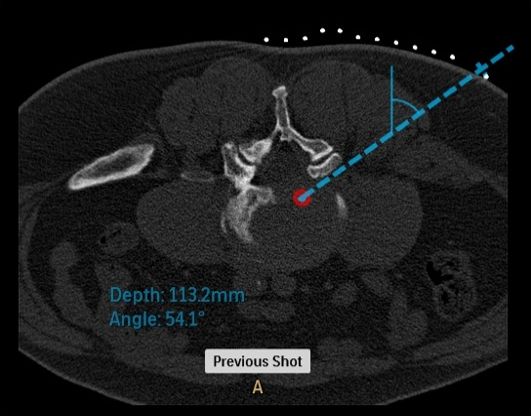
Computed tomography
CT Smart Workflow
AI-powered intelligent end-to-end workflow for fast, high-quality, low-dose CT exams
Support your staff with an end-to-end workflow solution that allows them to focus less on technology and more on the patient. From scan prep to post-processing, CT Smart Workflow is AI-enabled at every step with tools that deliver precision in dose, speed and image quality so your imaging team can apply their expertise to the patient, not the process. From automatic patient positioning and planning to AI reconstruction and motion-free cardiac imaging, CT Smart Workflow brings advances that matter in your day-to-day imaging.
CT Smart Workflow
AI-enabled CT Smart Workflow for excellence at every step of a CT scan
CT Smart Workflow has AI-enabled advances to support you as you prepare, scan reconstruct and post-process CT images.
Powerful Precise Image AI-based reconstruction for lower dose and higher image quality
AI reconstruction must be fast if it is to be integrated into the daily routine. Unlike other advanced recon techniques, Precise Image is fast, with all reference protocols reconstructed in under one minute. At 80% lower dose, Precise Image achieves up to 85% lower noise and 60% better low-contrast detectability than conventional image reconstruction.*

Precise Position and OnPlan controls save time while improving accuracy and consistency
Precise Position with AI-enabled smart camera improves accuracy of vertical positioning relative to manual positioning by up to 50% during scan preparation, increases consistency from user to user by up to 70%, and reduces positioning time by up to 23%.** Not only does Precise Position aid in reducing positioning time and increasing accuracy, but OnPlan patient-side touchscreen gantry controls let the technologist do more directly from the scanner, minimizing time spent away from the patient.

Precise Intervention for confidence in interventional CT
Perform efficient procedures with high image quality at low dose and reduce interventional procedure time by 16%.1With Precise Intervention, improved needle guidance automatically calculates depth, angle, tip-to-target and deviation from plan for the speed and efficiency necessary for quick and confident interventional procedures. Precise Intervention aids visualization of the target path and needle by allowing the physician to verify or modify the needle angle according to scan parameters.

CT 5300 is intelligence reimagined
Philips CT 5300 leverages AI for new clinical capabilities and workflow advances, with virtual tools for real-time collaboration and remote services to enhance system performance and uptime. We’ve built incredible intelligence into every aspect of this high-performing system from start to finish. CT 5300 features CT Smart Workflow so you can drive new levels of confidence and empower your team and patient care.

Documentation
Precise Image Comparison whitepaper
PDF|(915.59 KB)
AI for significantly lower dose and improved image quality: Precise Image
PDF|(1.14 MB)
Motion-compensated reconstruction for coronary imaging: Precise Cardiac
PDF|(521.54 KB)
AI to save time and improve precision in CT patient positioning: Precise Position
PDF|(655.38 KB)
Footnotes
- Chacko C. Precise Intervention Clinical Review Report for Loong. Philips Doc ID: D000874955. 2021.
Disclaimer
* In clinical practice, the use of Precise Image may reduce CT patient dose depending on the clinical task, patient size, and anatomical location. A consultation with a radiologist and a physicist should be made to determine the appropriate dose to obtain diagnostic image quality for the particular clinical task. Dose reduction assessments were performed using reference body protocols with 1.0 mm slices at the “Smoother” setting, and tested on the MITA CT IQ Phantom (CCT189, The Phantom Laboratory) assessing the 10 mm pin and compared to filtered-back projection. A range is seen across the four pins, using a channelized hoteling observer tool, that includes lower image noise by 85% and improved low-contrast detectability from 0% to 60% at 50% to 80% dose reduction. NPS curve shift is used to evaluate image appearance, as measured on a 20 cm water phantom in the center 50 mm x 50 mm region of interest, with an average shift of 6% or less.
** Based on Philips in-house assessment by five clinical experts, comparing manual positioning versus Precise Position in 40 clinical cases using a human body phantom.